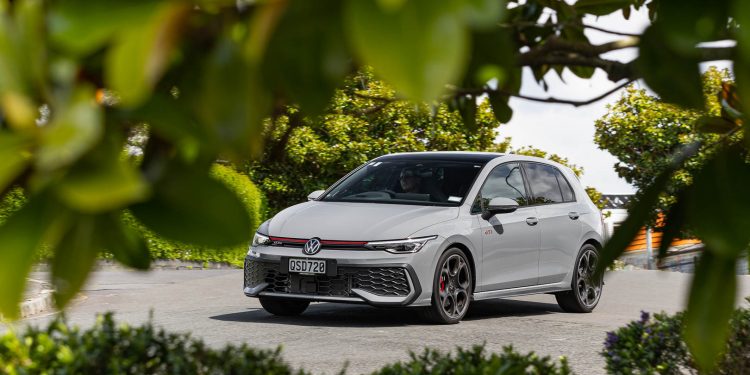2024 Volkswagen Golf GTI review
Words: Peter Louisson | Photos: Isaac Western
For those who want a hot hatch that can cope with a day at the track and get you there and back in comfort, look no further than the latest Golf GTI.
Volkswagen’s Golf GTI has long been a favourite hot hatch of not just NZ Autocar’s but of New Zealand’s. And that’s because it is such an accomplished allrounder, suiting such a wide variety of people.
I like it especially because a few years back it was the first front-wheel drive car to break the 6sec 0-100 barrier. We’d been waiting for some time too.
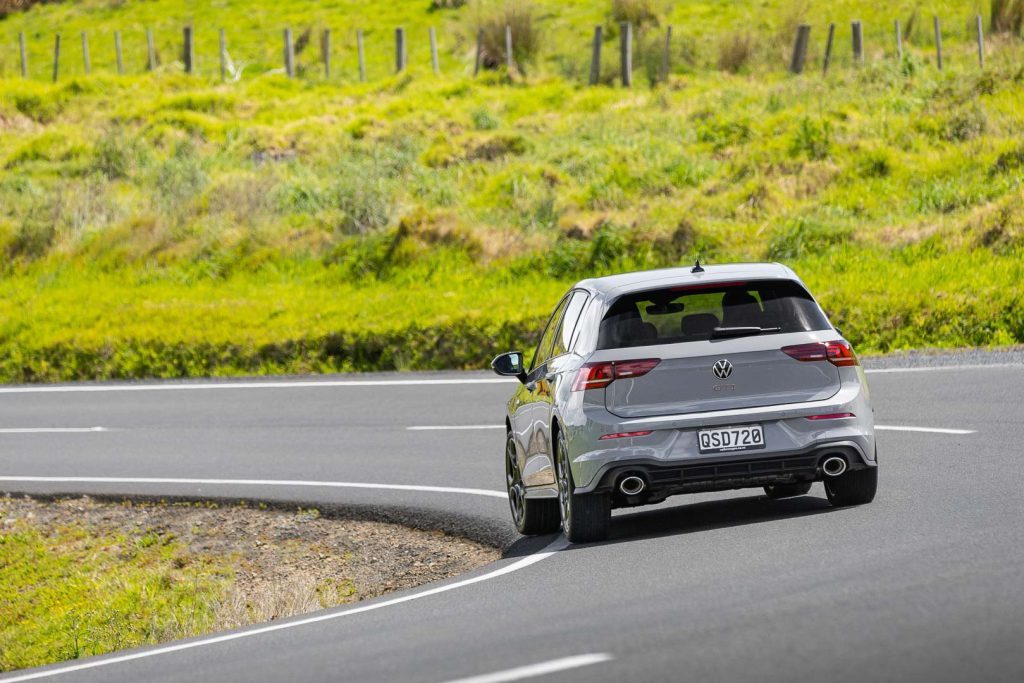
It wasn’t exactly a bog standard GTI, however, the Golf GTI TCR being one of the limited editions that had an ECU reflash and 210kW under the hood.
But now Volkswagen has breathed on the existing GTI 2.0T and claims it too will run the sprint to the legal limit in under six seconds.
It’s the first time the standard GTI has managed this feat – VW suggests 5.9sec. The previous generation Golf GTI needed 6.4sec.
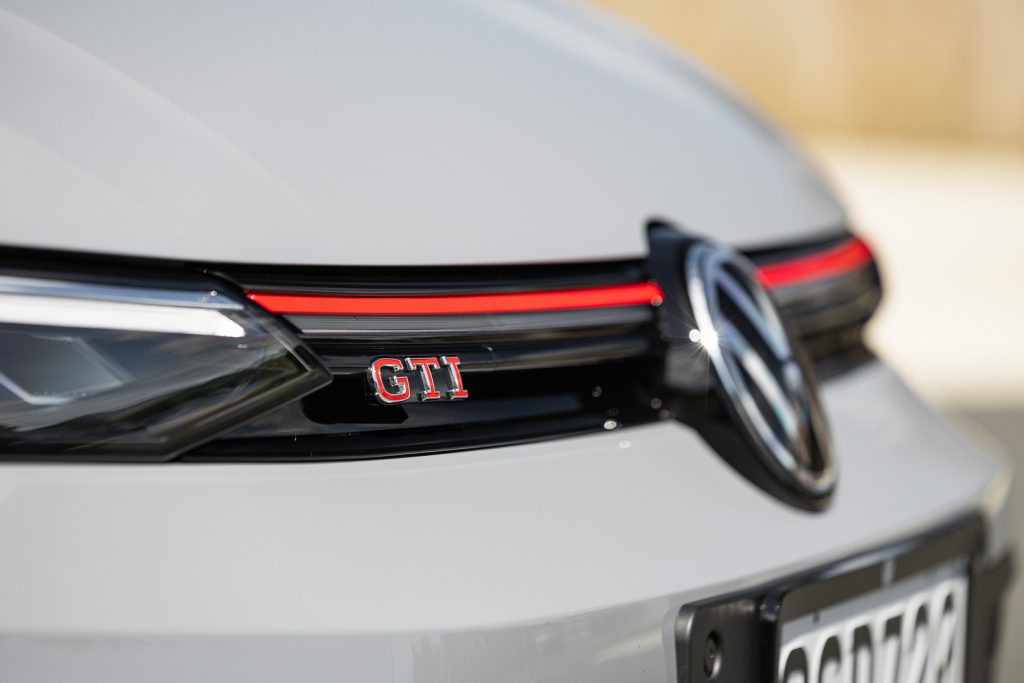
What is it exactly?
For 2024 the GTI is refreshed for the final time before the next (ninth) generation, at which time Golf goes fully electric. But not solely EV, for it seems as though VW intends to offer ICE power for a bit longer than it first thought.
The German was looking at electric everything by 2030 but with the slowdown in EV uptake it has, like others, pushed the full EV adoption date back towards 2035.
Thus, the next Golf is likely to run with two different platforms and powertrains, and probably the same (or similar) body shape. However, that’s a few years away yet.
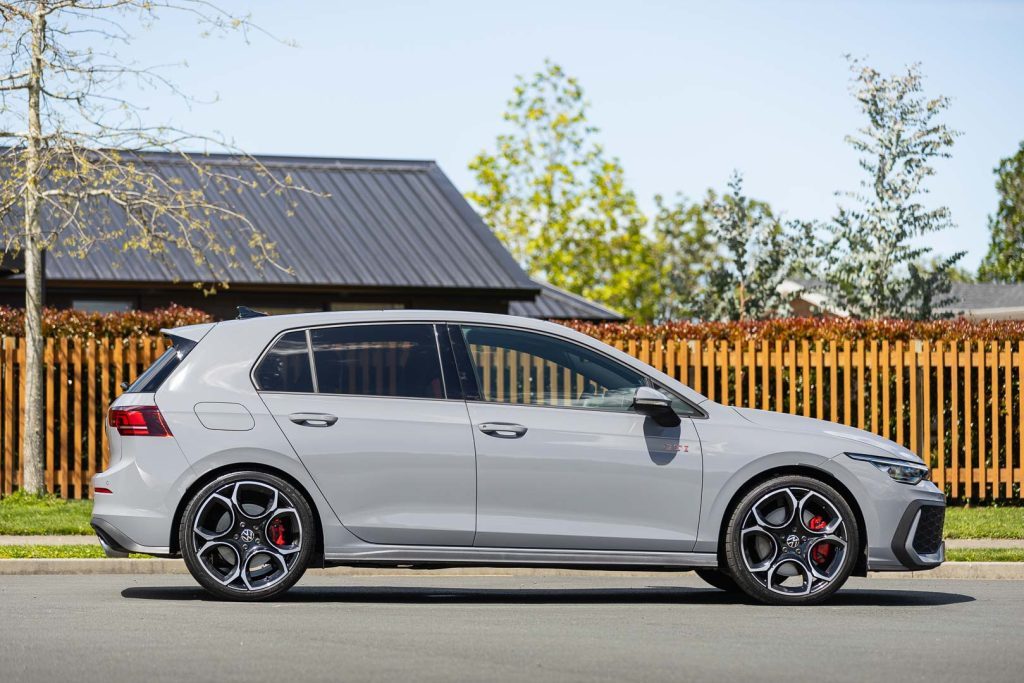
Meantime we get Gen 8.5 of the Golf GTI. It’s all about subtle tweaks here and there; the sheetmetal remains the same. There are new lights, bumpers, grille and wheels but it all looks GTI familiar.
Like those before it, this is not an overt hot hatch; it’s quite stealthy in fact. There’s the same red strip and GTI badge up front. Along the flanks, there’s another red GTI badge that has moved rearward, from the guard to the door.
Round the back there are still the twin round exhaust outlets to signify this is a go-hard model. The new gloss black and machined 19-inch telephone dial wheels look peachy.
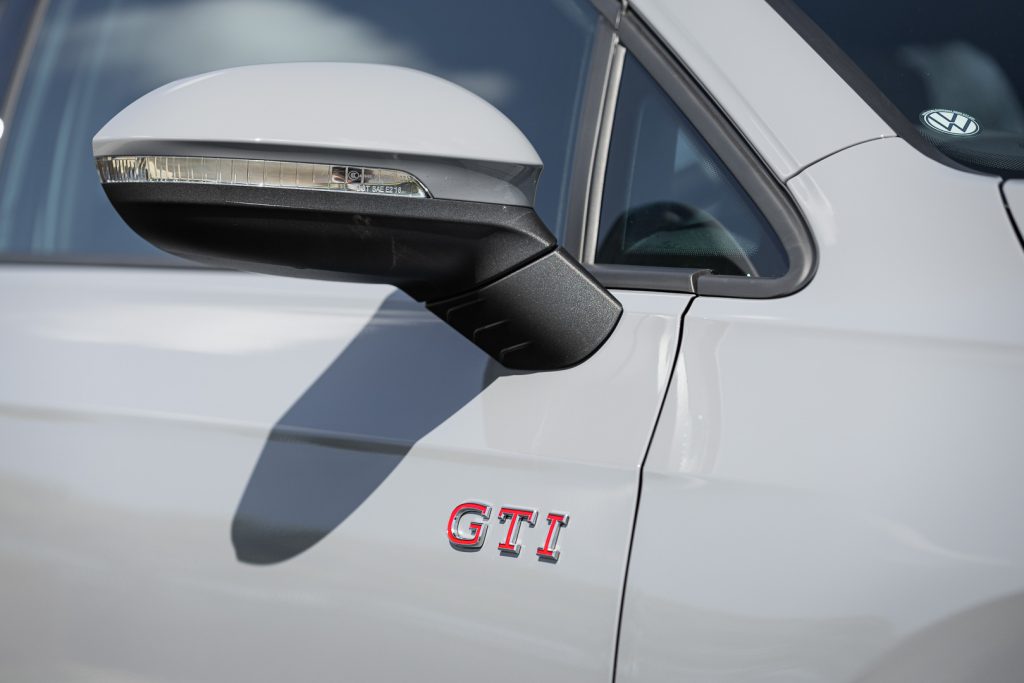
Changes to small things inside
Volkswagen folk listened to the whinging about haptics on the wheel and they’ve gone, replaced by conventional buttons. A small thing maybe but as we said, lots of little improvements make the car seem that much better, easier to live with.
It’s now simpler to change climate control settings too. You don’t have to delve into the infotainment system which is also a touch snappier in action.
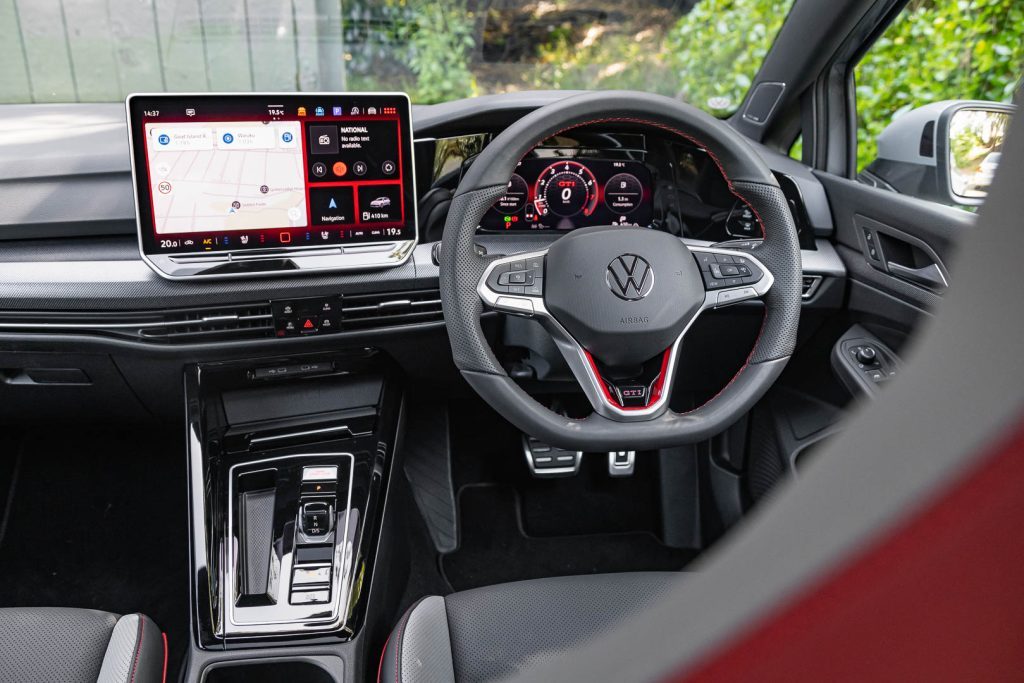
Our car featured two-tone Vienna leather with red piping and stitching. Remember how Golf GTI used to have tartan cloth seats? They still do, in what’s known as scale paper.
But these cow-clad sports seats look more premium. They are quite encompassing too, though the lumbar pump isn’t quite as resolute as it might be.
No biggie though because the engine is certainly pumped, gaining 15kW up to 195kW while torque is set at 370Nm. We did the usual things to prep a car for performance testing; turn down ESP, select Sport, hold the brake down and hit the gas.
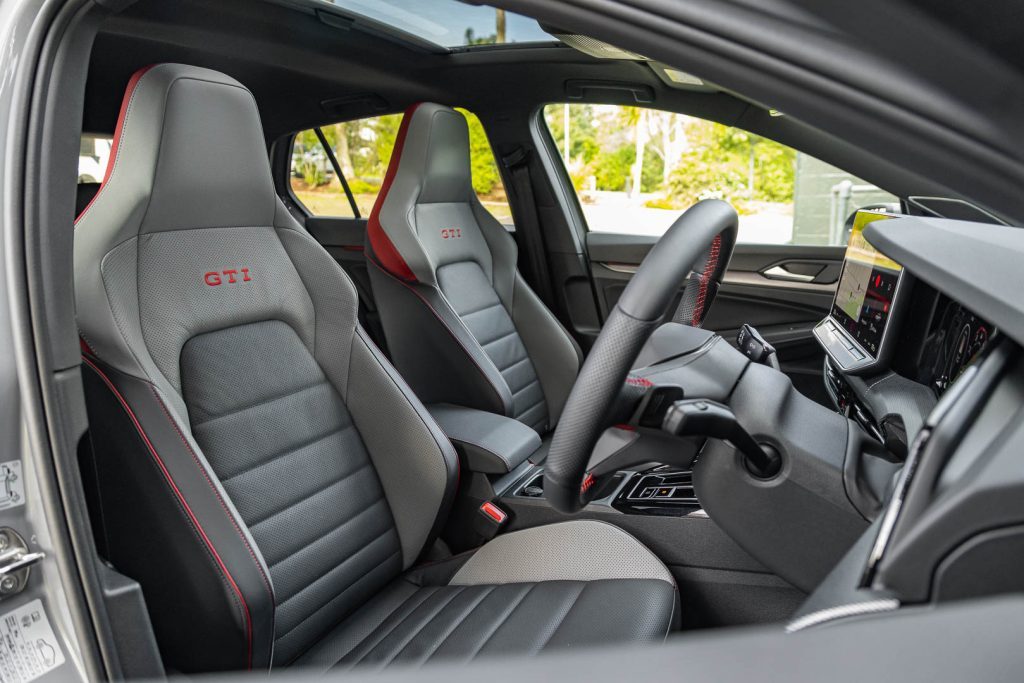
It then hovers at 4000rpm signifying launch control. The first run wasn’t great so we figured it must like ESP off completely. Sure enough, a better launch and instantly a 5.90sec run.
We got one better at 5.86sec so the 5.9sec claim is pretty accurate. Think low 3s for an overtake, just a couple of tenths behind its kind-of rival, Civic Type R.
And all the crash stops from 100 were in the 32-33m bracket. Great brakes then, as you’d hope for something with a go-hard attitude.
Is the extra 15kW noticeable? Hand on heart, I’d say yes. Performance data aside, this seems just a bit perkier than I recall.
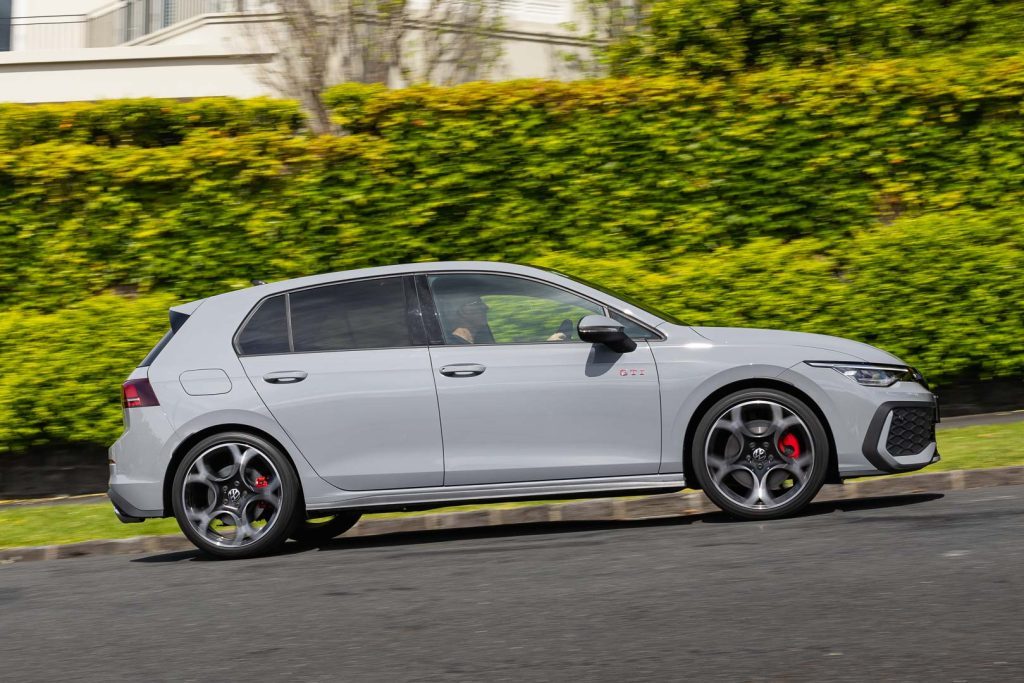
Not only that; it seems to get off the line in sprightly fashion, with very little of the usual delay you get from a restart, twin-clutch transmission and turbolag. It’s impressive.
How are the dynamics?
Impressive is also how we’d describe the ride and handling mix; it’s just so accomplished thanks to the adaptive damping (DCC), locking e-diff and progressive steering. Lock to lock requires just 1.9 turns, not that the turning circle is anything crash hot at 11.6m.
Never mind because once you turn off the lane keeping gizmo the feel at the wheel is superb; in Sport mode you can sense what type of insect you’ve just run over. Ease back to Comfort and the steering feel is more distant, relaxed.
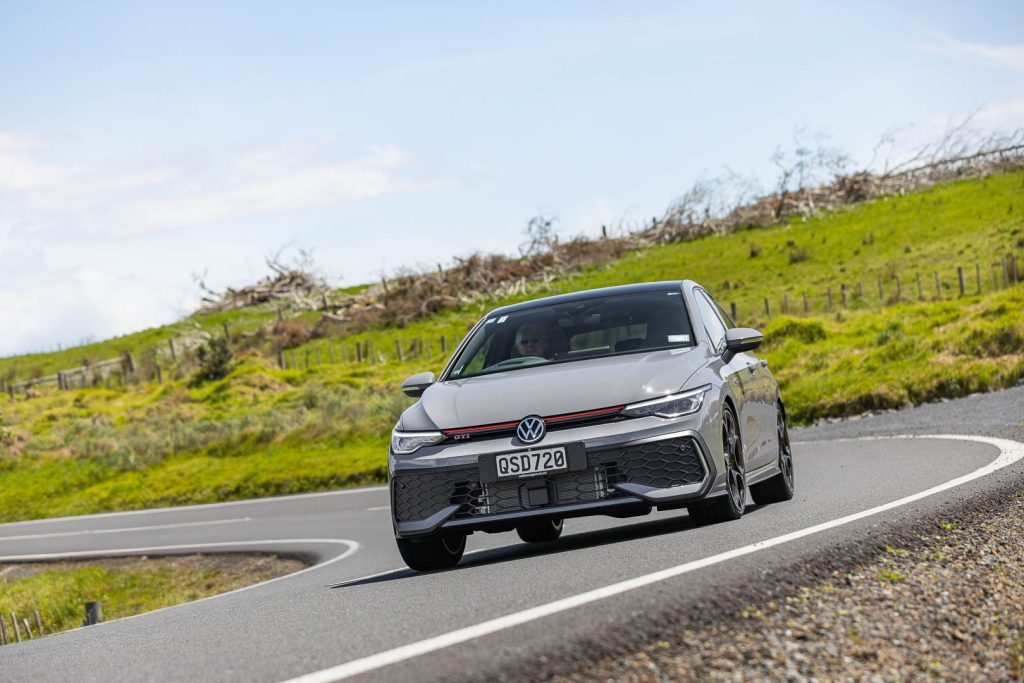
Want regular ride quality? You can have that too if you want; just dial up Individual and there are 15 levels of ride comfort, from supple to stiff. And at open road speeds we reckon Comfort is actually the best of the Mode settings.
It treads a fine line between body control, ride comfort and corner carving. In Sport, it can sometimes ping off the bigger bumps. Great for track work we’d imagine, but in the real world Comfort is the go.
The Potenzas are just stellar for this car, despite being somewhat noisy over the worst seal surfaces.
But they compensate by hanging tough in the bends, and the electronic locking diff means it hauls out of bends like a champ. Any sniff of understeer responds to a brief throttle lift too.
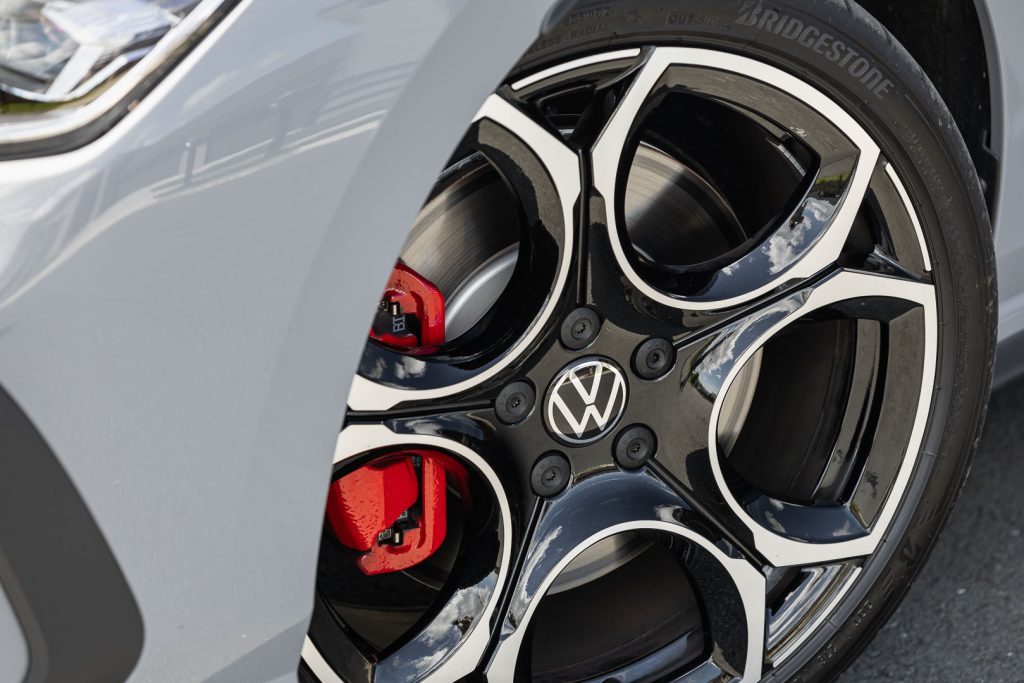
And all the while the 2.0T is just doing its thing, oozing torque at real world revs. Again, Comfort setting is fine for performance, the lift in Sport not that dramatic.
It’s easier to raise the stakes a tich by flicking the stubby wee shift lever; that rarks up the transmission, like a push to pass button.
There are a few pops and bangs on the overrun too, always pleasing when you’re in the mood to let the GTI off its leash. But for the most part midrange revs are all you need.
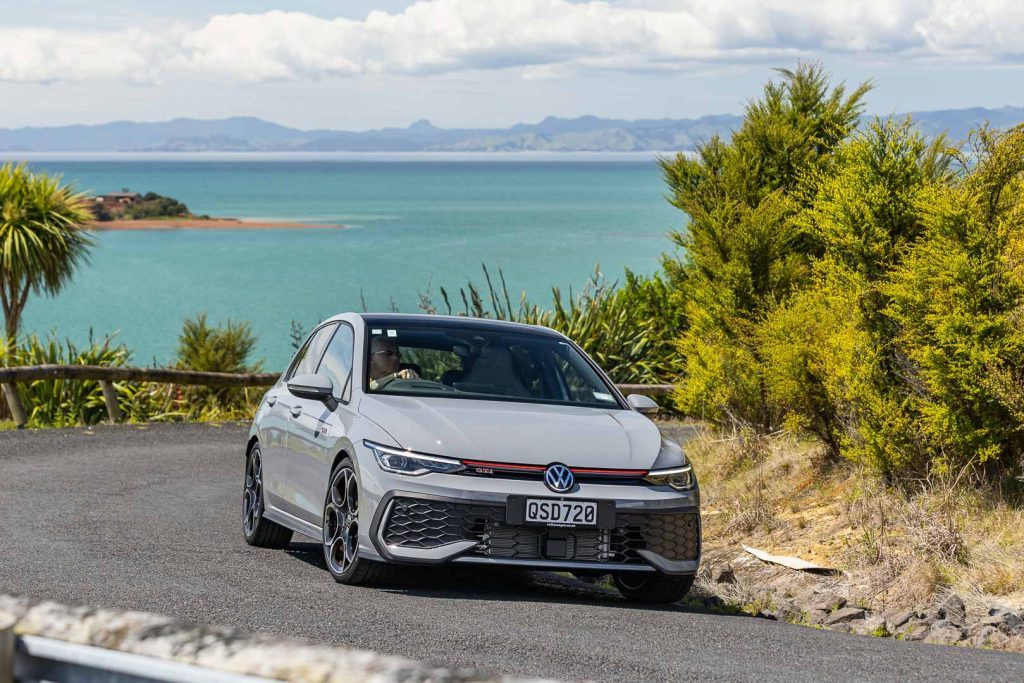
Inside easy
As for the software updates, this really is a much easier car to manage now. Any driver assist bits you might not want are just a submenu push away. The adaptive cruise you can run with steering autonomy (Travel Assist) or without (ACC).
There are three instrument views but you’ll only ever want the GTI screen. And there are various trip data options you can keep tabs on in the instruments. Don’t choose G meter; it’s too distracting.
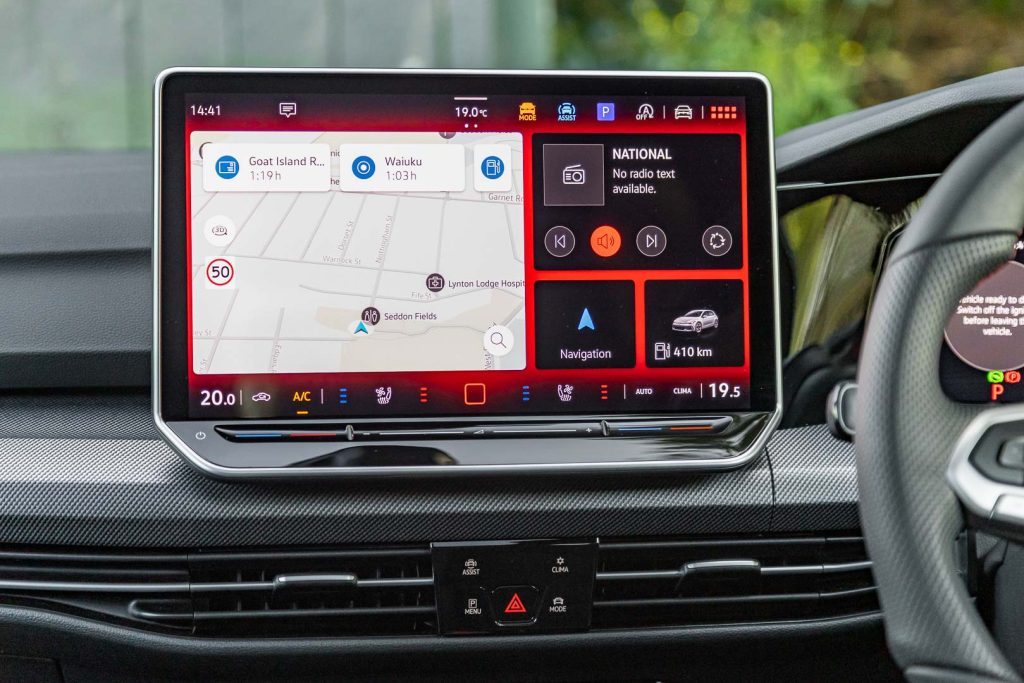
We chose fuel use (average and instantaneous) as you do. Think 10s if you’re busy, eights if you’re in town and sixes and sevens while cruising, fives sometimes with restraint. VW claims 7.4 overall.
Initially we were impressed that Volkswagen New Zealand was able to offer the latest improved GTI for $2k less than before.
However, some of the bits and bobs that you genuinely appreciate, like the wheel heater in winter, and vented and heated sports seats with power adjustment, are all part of a $5k Touring GTI package.
It also includes the powered sunroof with manual slide beneath, and an uprated Harman Kardon sound system (12-channel 480wpc amp with separate sub).
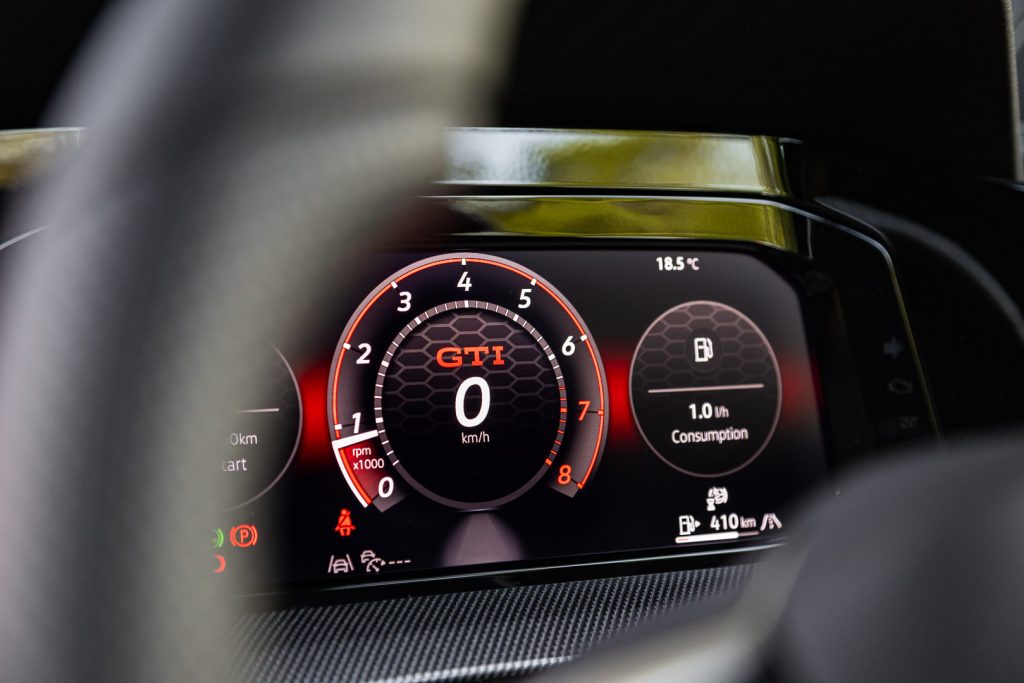
The standard head-up display didn’t quite do it for us; it’s clear enough but positioned too high, around midscreen. Drop it down some and it disappears. Fortunately as set up it relays speed only; the thing you’ll most want to know about ASAP.
That’s especially the case now that the government is talking about raising speeding fines. And on that, there’s no traffic sign recognition in Golf GTI which we’d guess is because Golf Gen VIII dropped just before these started to become popular.
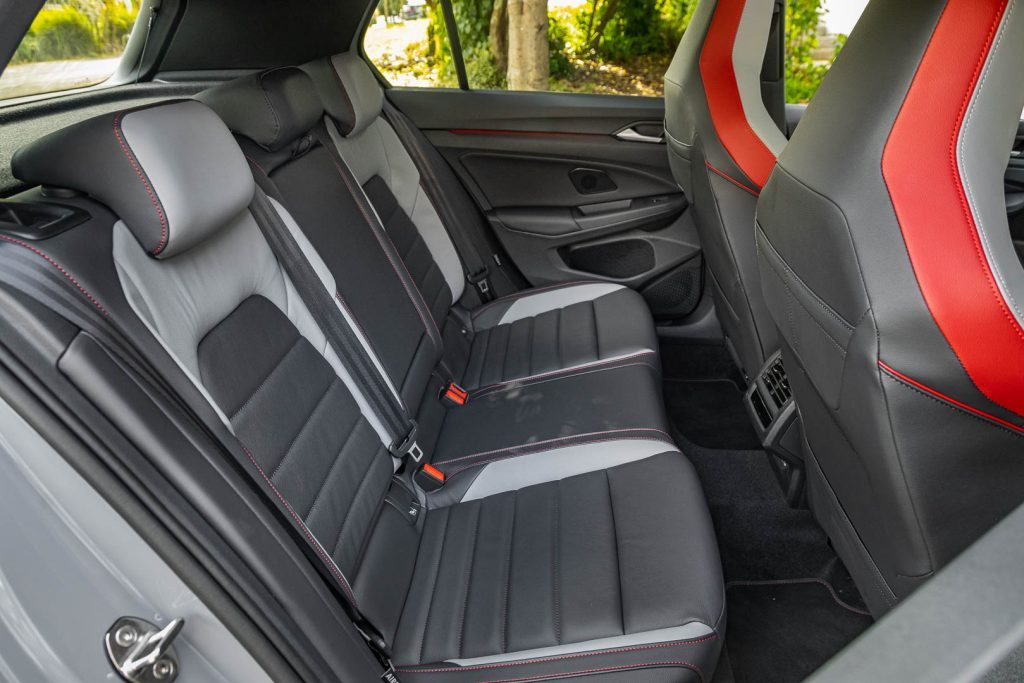
Light ‘em up
We liked the ambient lighting that changes instrument colour – pink at pick up but really red is best, right? – and the puddle lamps with GTI surrounded by honeycomb shapes, like in the grille.
And this locks and unlocks by itself depending on where the proximity key happens to be.
There’s no powered hatch here, and it isn’t missed. Just push on the VW badge at the rear and lift to rise.
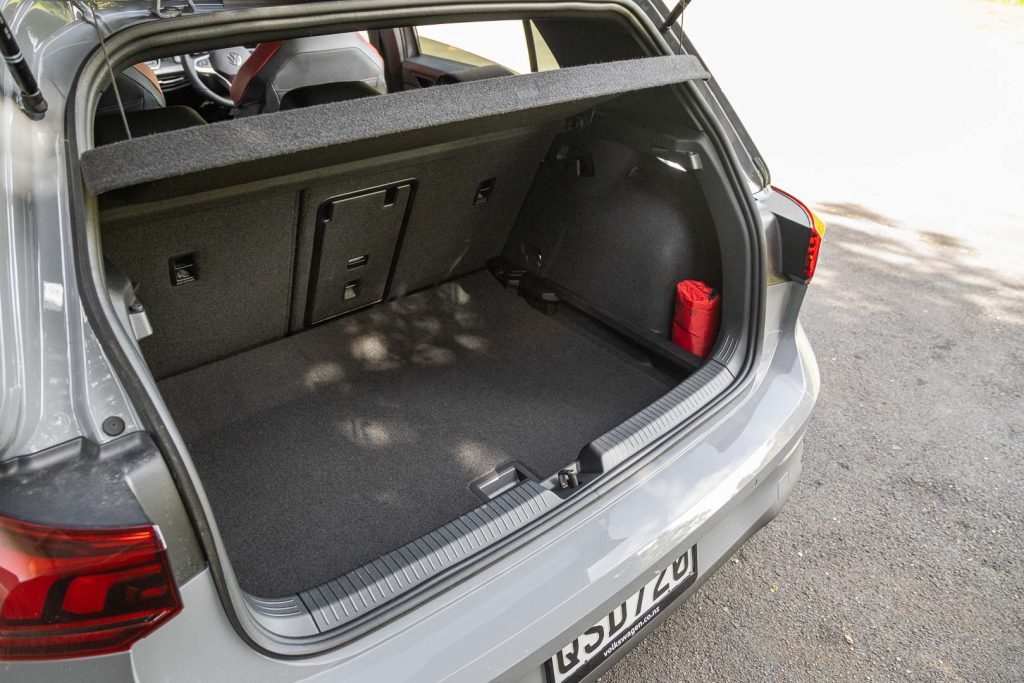
The luggage bay is practically shaped, has two floor levels and accommodates 381L of gear, expanding to 1237L if you’ve the need. We did and it swallowed our ebike, just, once we’d removed the front wheel.
Climbing in the back and this is essentially for two not-so-big adults where the stretch space is reasonable. There’s a zone of AC back there to manipulate too.
If you thought Beetle was a success story for VW, selling 23 million in total, Golf is closing in on being twice as popular. At last count Volkswagen had moved 37m of these, with Passat hot on its heels at 34m.
But hatch popularity isn’t what it used to be, at least not in some parts of the world where utes and SUVs now dominate. Despite this, Golf and GTI keep on keeping on and we’re glad they do.
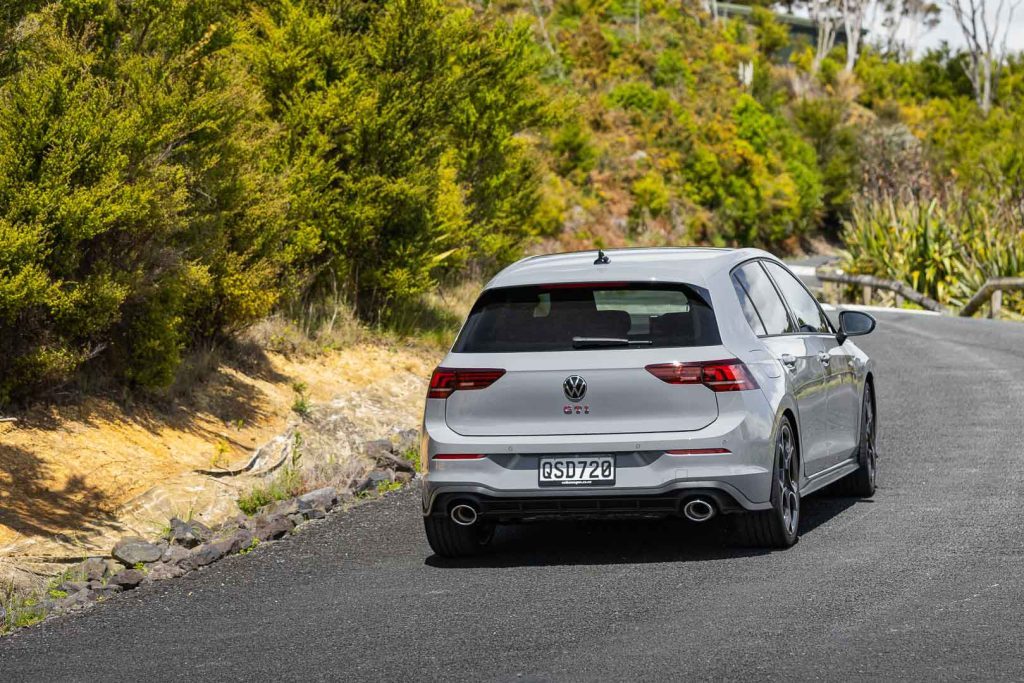
The main competition for the GTI is Civic Type R but really it appeals to someone different, a younger demographic for sure, and probably more sports oriented, with its six-speed manual transmission only.
That the Golf can cling to the heels of this more potent package is testament to good design and engineering.
For most folk, the Golf will be a far easier car to live with on a day-to-day basis, and people you speak with still like the GTI’s conservative lines that haven’t changed much down through the years.
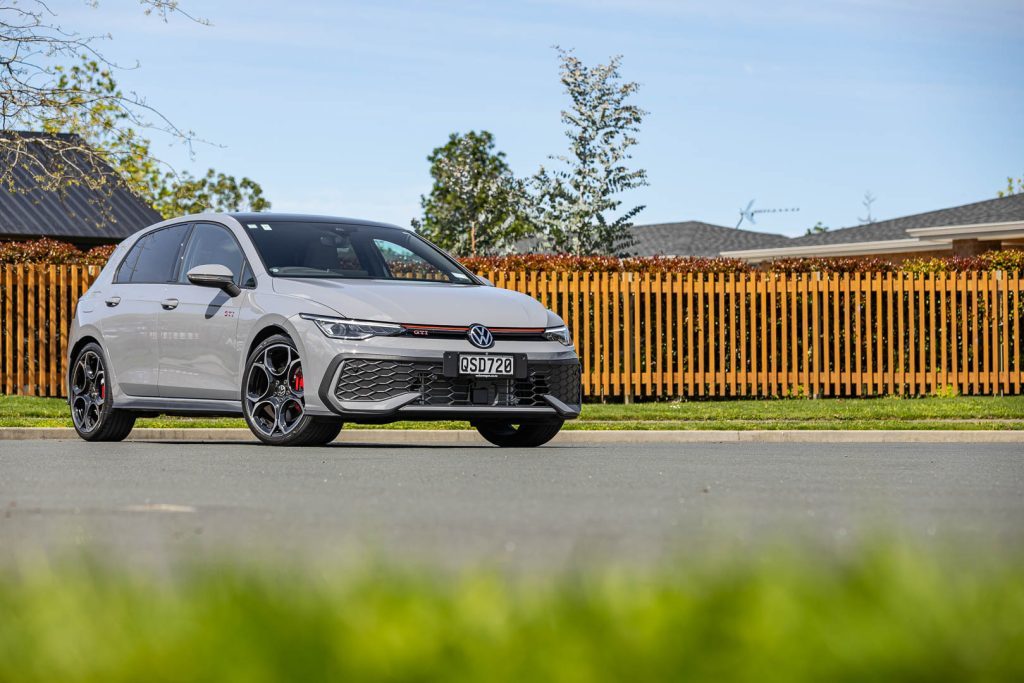
It’s a classic case of evolutionary development, numerous subtle changes adding up with each generation to something that keeps on moving the game forward.
| Model | Volkswagen Golf GTI |
| Price | $67,990 |
| Engine | 1984cc / IL4 / T / DI |
| Power | 195kW@5260-6500rpm |
| Torque | 370Nm@1600-4500rpm |
| Drivetrain | 7-speed twin-clutch / FWD |
| Fuel Use | 7.4L/100km |
| C02 Output | 170g/km |
| 0-100km/h | 5.86sec |
| 80-120km/h | 3.16sec (90.27m) |
| 100-0km/h | 32.42m |
| Stability systems | ABS, ESP |
| Safety | AEB, ACC, BSM, LDW, RCTA, ALK, AHB |
| Luggage Capacity | 381-1237L |
| Tow rating | 720kg (1600kg brake) |
| Fuel Capacity | 51L |
| Service intervals | 12 months/15,00 km |
| Warranty | 5 years/150,000km |
| ANCAP rating | Not rated |
| Weight | 1454kg (claimed) |
This article first appeared in the November 2024 issue of NZ Autocar magazine.


